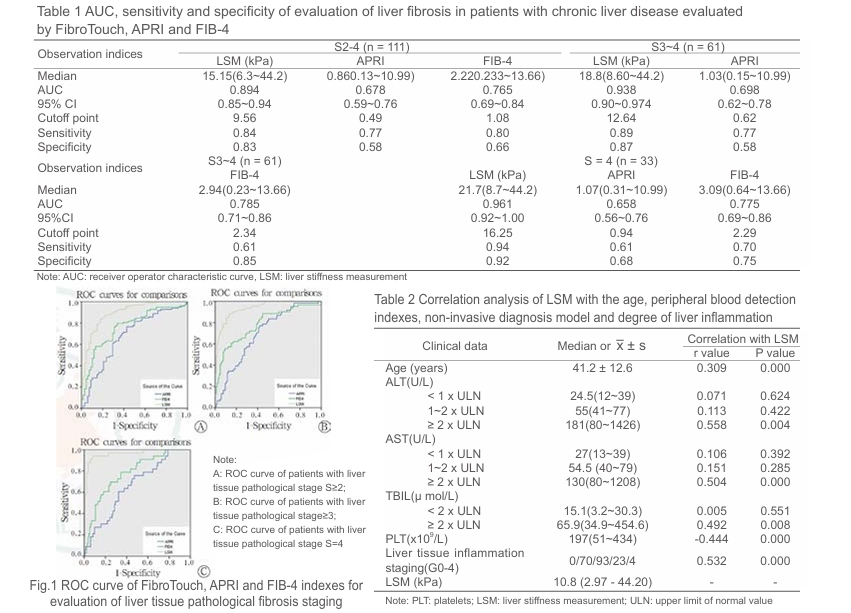
•To identify whether FibroTouch is a more accurate and safe method in diagnosis of liver fibrosis and evaluation of the therapeutic effect.
•190 patients with chronic liver disease were performed liver biopsy and underwent liver stiffness measurement (LSM) using FibroTouch.
•Serum alanine aminotransferase (ALT), aspartate aminotransferase (AST) and total bilirubin (TBIL) were tested by enzymic method with automatic biochemistry analyzer. Blood platelet counts were detected by automatic blood cell analyzer. APRI and fibrosis index based on the FIB-4 were calculated.
•The diagnostic values of FibroTouch, APRI and FIB-4 for liver fibrosis degree were calculated and compared by ROC curves.
•The related factors of LSM were analyzed by Spearman analysis.

•There was significant correlation between LSM and histological fibrosis (r = 0.804, P = 0.000). The area under ROC curve of LSM for S ≥ 2、S ≥ 3 and S = 4 was 0.894, 0.938 and 0.961, respectively, which was significantly higher than APRI (0.678, 0.698 and 0.658) and FIB-4 (0.765, 0.785 and 0.775).
•On Spearman analysis, LSM was positively correlated with age, ALT, AST, TBIL (≥ 2 × ULN) and the grade of liver inflammation (r = 0.309, 0.558, 0.504, 0.492 and 0.532, respectively) but negatively with PLT (r = -0.444), (all P < 0.05).
•The sensitivity and specificity of FibroTouch in diagnosis of hepatic fibrosis is superior to APRI and FIB-4, and age, high level of ALT, AST and TBIL (≥ 2 × ULN) were independent predictors of LSM inaccuracy.
